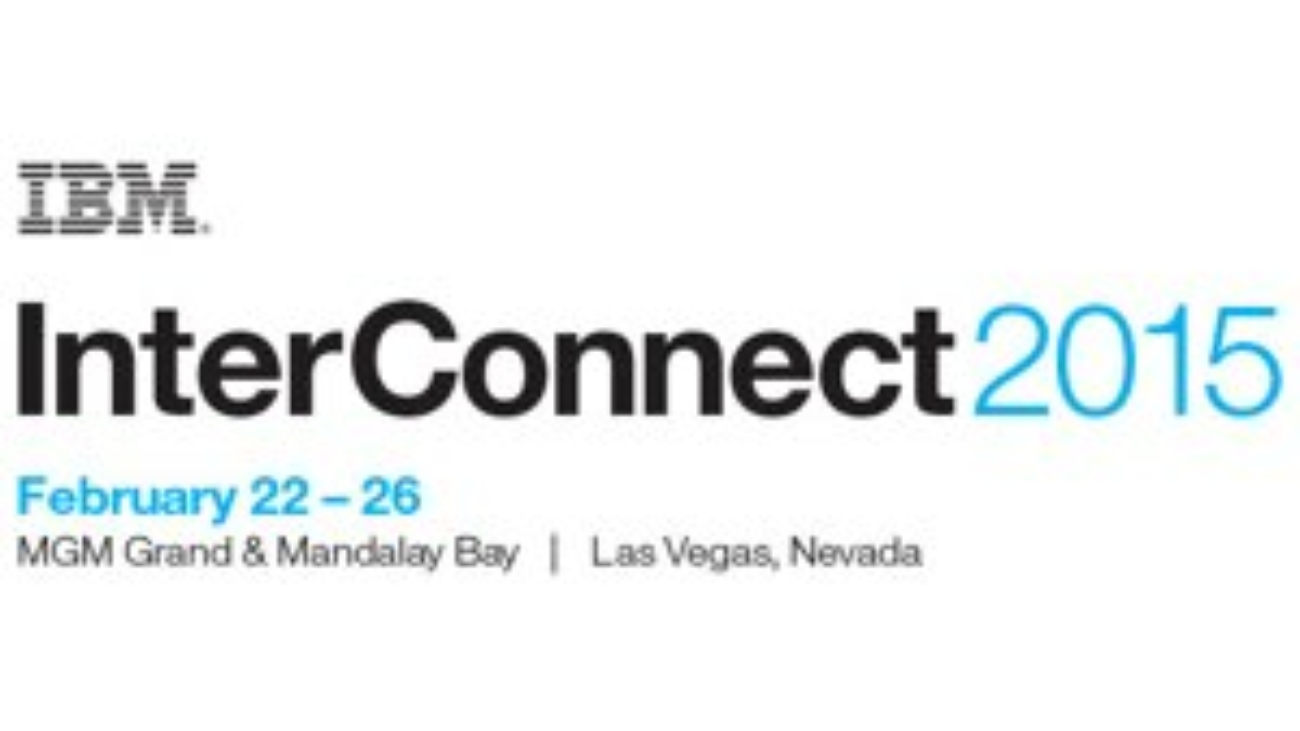A new and very neat IBM tool has been added to the IBM Collaboration Solutions Catalog in the last week or so:
[titled_box title = “The Sanity Validation Tool for IBM Connections 4.5”]The Sanity Validation Tool for IBM Connections 4.5 release was developed to help developers, system administrators, support engineers and eventually customers during their deployment of Connections. The tool was designed with the ability to run Pre-install, During and Post installation to verify a handful of common configuration requirements and settings. Refer to the Read Me file for list of System, Websphere, Database, IHS configuration settings the tool validates. The tool supports installation on Linux/DB2 LDAP.[/titled_box]
You can download by clicking through from the Catalog, or by going direct to the ‘Lotus Business Solutions IBM Download site‘, logging in with your IBM ID and then searching for ‘Sanity’ to find the download in the very long list of tools on that site (there’s all sorts of interesting stuff on that list, something to investigate on a rainy day!). You then need to fill in the obligatory IBM survey (‘Select which best describes your plans to use this software’ etc.), agree to the license and then you get to download the 176KB zip file.
Unpacking the zip file gives a folder named ‘sanity as of 9 16 2013’ (so this code has obviously been kicking around inside IBM for a while now!). This folder contains the code to be installed on your Linux server, plus a rudimentary README.txt file:

This is the first I’ve seen of this tool, so these are my comments as I go.
- Put the ‘sanity’ folder from inside the unpacked zip file somewhere memorable on your Connections 4.5 server (I used /opt/IBM/sanity).
- Check you have Python 2.6.x installed by running ‘python’ as root, e.g.
[root@myserver sanity]# python
Python 2.6.6 (r266:84292, Aug 28 2012, 10:55:56)
[GCC 4.4.6 20120305 (Red Hat 4.4.6-4)] on linux2
Type “help”, “copyright”, “credits” or “license” for more information. - Make a backup and then edit conf.json using your favourite text editor, correcting these default values:
[titled_box title = “Default configuration values”]”params”:{
“connections.pathCon”:”/opt/IBM/Connections”,
“connections.pathShare”:”/opt/IBM/Connections/data/shared”,
“connections.pathConInst”:”/root/IBM_Connections_Install_Linux”,
“db2.servers”:[
{
“name”:”activities”,
“location”:”ictools2.swg.usma.ibm.com”,
“username”:”db2inst1″,
“password”:”password”,
“path”:”/opt/ibm/db2/V10.1″,
“dedicatedUser”:”lcuser”,
“wizardsLocation”:”/Wizards”,
“port”:”50000″
}
],
“driver.saveResults”:1,
“driver.saveResultsPath”:”testResults.json”,
“driver.quietDependencyCheck”:0,
“IHS.pathIHS”:”/opt/IBM/HTTPServer”,
“IHS.pathKey”:”/opt/IBM/HTTPServer/keys/ihskey.kdb”,
“IHS.pathStash”:”/opt/IBM/HTTPServer/keys/ihskey.sth”,
“ldap.java”:”/home/lcuser/jre1.7.0/bin/java”,
“ldap.server”:”ilyavm.swg.usma.ibm.com”,
“ldap.port”:”389″,
“ldap.user”:”cn=root”,
“ldap.password”:”lcsecret”,
“ldap.base”:”o=renovations”,
“ldap.filter”:”(&(objectClass=inetOrgPerson))”,
“system.pathDB2″:”/opt/ibm/db2/V10.1”,
“system.pathInstMan”:”/opt/IBM/InstallationManager”,
“tdi.location”:”local”,
“tdi.username”:”db2inst1″,
“tdi.password”:”lcsecret”,
“tdi.path”:”/opt/IBM/TDI/V7.1″,
“websphere.pathWAS”:”/opt/IBM/WebSphere”,
“websphere.server”:”ictools2.swg.usma.ibm.com”,
“websphere.srvName”:”server1″,
“websphere.profile”:”AppSrv01″,
“websphere.cell”:”ictools2Cell01″,
“wsadmin.user”:”Dmgr01″,
“wsadmin.pass”:”passw0rd”[/titled_box] This is a little bit of a faff to get right initially, but once done can stay static for all future testing, and most likely can be used as a template for future installs of the tool on other systems. - Run ‘python cmd_frontend.py’ as root (or as the user you use to run Websphere and Connections). This kicks off a whole series of tests, e.g.:
[titled_box title = “Running Sanity Check from the command line”][root@myserver sanity]# python cmd_frontend.py
Welcome to the Sanity installation validation tool.
Configuration File Location (default is conf.json):
Loading config file at /opt/IBM/sanity/conf.json
Loading test modules in the folder /opt/IBM/sanity/tests
Loading test groups
Verifying tests dependencies
Starting tests…
Starting test group: System Pre-install Check…
Starting test: Determine if all required Linux libraries have been installed
Searching for library packages…
Found: compat-libstdc++-33.x86_64
Found: compat-libstdc++-33.i686
Found: compat-libstdc++-296-2.96
Found: libcanberra-gtk2.i686
Found: PackageKit-gtk-module.i686
Found: gtk2.i686
Found: libXtst.i686
Test finished with result: LIBRARY ERROR: Missing library ‘libpam.so.0’Starting test: Determine if enough disk space exists to install Connections (114GB recommended)
Getting disk space…
Total free disk space: 14GB
Test finished with result: Warning: Free space is less than 114GB; problems may occur when installing ConnectionsStarting test: Determine if enough memory exists to fulfill the recommended amount (8GB recommended)
Getting total memory…
Total memory: 7GB
Test finished with result: Warning: Total memory is less than 8GB; problems may occur when running ConnectionsStarting test: Determine if permissions to required directories are set properly
Checking if path exists: /opt/IBM/InstallationManager
Path exists
Checking access rights for /opt/IBM/InstallationManager…
Checking admin permissions for /opt/IBM/InstallationManager…
Admin permissions enabled
Checking group permissions for /opt/IBM/InstallationManager…
Test finished with result: PERMISSION ERROR: Nonroot user denied write permission for ‘Installation Manager’Starting test: Determine if uLimit is set to at least the recommended value 8200
Getting uLimit…
uLimit: 10240
Total memory is greater than recommended amount (8200)
Test successful
Test finished with result: PASSFinished running test group: System Pre-install CheckStarting test group: WebSphere Pre-install tests…
Starting test: Determine if security is enabled
Checking WebSphere for wsadmin.sh…
Found wsadmin.sh
Getting WebSphere security status…
Test finished with result: SECURITY ERROR: Security is not enabled[/titled_box]This was run on a server that has been successfully running Connections 4.5 for a year or so. As you can see from the snippet of output above, it has already picked out some things that can be improved. The script took about 30 seconds to run in all. - The tool can also be accessed via a web page which is rather cool. Simply run ‘python web_frontend.py’:
[titled_box title = “Enabling Sanity Check via a browser”][root@ssconnus sanity]# python web_frontend.py
Starting Server
Press ctrl+c to stop the server[/titled_box] And then access the Connections server on port 8000, e.g. http://connections.myorg.com:8000:
This allows the administrator to add parameters to be applied to the test, and also to select the tests to be executed:

Once the tests have been run, the output is displayed in the browser, and is then stored for review later.
As I mentioned above, getting the config file correct took a little while initially, but once this is done, the tool produces some excellent output and has already proved to be very useful. I can imagine running it on all my servers (most Connections platforms I’ve worked on are Linux/DB2 so this fits the bill for me), and using it on a regular basis – particularly during upgrades and migrations.
Whilst this is a ‘USE AS IS’ tool and is not supported, I can imagine it becoming part of most Connections admin toolkits… It only supports Connections 4.5 today, but should in theory work on Connections 5.0 as well, perhaps with a few minor tweaks to deal with the newer version of WAS involved. I haven’t had a chance to test this yet though. It obviously isn’t supported on Windows, AIX or System i either.
I’m not sure who in IBM is responsible for the tool, but kudos to them! I’d love to see it included in the default Connections install for Linux, then many of the parameters could be set automatically during the install. Till then, download it and install ASAP. Recommended!

 Therefore I am delighted to see TemboSocial fully integrate their cross-platform ideation technology,
Therefore I am delighted to see TemboSocial fully integrate their cross-platform ideation technology, 








 The Social Business Toolkit (SBT) SDK is a set of extensible tools and resources for developers who want to incorporate social capabilities into their applications and business processes. Social capabilities include features and functionality that tap into the power of social interactions, business networks, community-based problem solving, and more.
The Social Business Toolkit (SBT) SDK is a set of extensible tools and resources for developers who want to incorporate social capabilities into their applications and business processes. Social capabilities include features and functionality that tap into the power of social interactions, business networks, community-based problem solving, and more.

 I’ve been giving a great deal of thought to the ‘Future of Work‘ in recent months, to what it means to be a knowledge worker within an organisation in 2014, and how that might change as we look forward through this decade to 2020 and beyond. The rise of social, mobile and cloud technologies in recent years should mean that the workplace of 2020 will look and operate very differently to those that we are familiar with today.
I’ve been giving a great deal of thought to the ‘Future of Work‘ in recent months, to what it means to be a knowledge worker within an organisation in 2014, and how that might change as we look forward through this decade to 2020 and beyond. The rise of social, mobile and cloud technologies in recent years should mean that the workplace of 2020 will look and operate very differently to those that we are familiar with today. Now clearly this kind of fundamental change takes time and a huge amount of effort and buy-in. It will not happen overnight. However, each of us can make a difference in our own work, the way that we deal with others, how we deliver on our commitments and so on. That’s why
Now clearly this kind of fundamental change takes time and a huge amount of effort and buy-in. It will not happen overnight. However, each of us can make a difference in our own work, the way that we deal with others, how we deliver on our commitments and so on. That’s why 
 As promised by
As promised by 




 How many have you tried, and what’s your favourite?
How many have you tried, and what’s your favourite?


 For our third
For our third  On this occasion I framed the discussion on the emerging role of the Community Manager (seen by some as the ‘rock star of the Enterprise’) and then actually used a collaboration platform to discuss, collaborate and innovate around the chosen topic.
On this occasion I framed the discussion on the emerging role of the Community Manager (seen by some as the ‘rock star of the Enterprise’) and then actually used a collaboration platform to discuss, collaborate and innovate around the chosen topic.

 If you are running IBM Connections (any version) and have configured your SSL connect between the HTTP Server and WAS by importing the WAS SSL certificate into the Plugin keyfile (versus creating your own keyfile) and haven’t changed the default password, go do so now!
If you are running IBM Connections (any version) and have configured your SSL connect between the HTTP Server and WAS by importing the WAS SSL certificate into the Plugin keyfile (versus creating your own keyfile) and haven’t changed the default password, go do so now!
